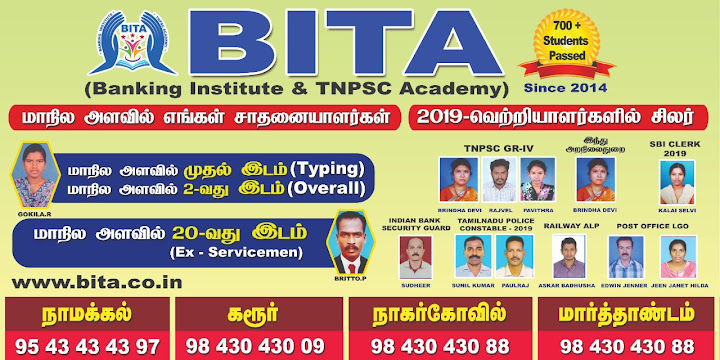Q1. What is the term used for measurement of how fast data moves from one place to another?
(a) data per unit
(b) bits per second
(c) bits per hour
(e) ratio per bit
(d) None of the above
Bits per second is the term used for measurement of how fast data moves from one place to another. The bit rate is quantified using the bits per second unit (symbol: "bit/s"), often in conjunction with an SI prefix such as "kilo".
Q2. Functions of keys F1, F2 and F3 are _____________ respectively.
(a) activating menu bar, search and renaming selected icon
(b) search, reboot and activating menu bar
(c) activating help, renaming selected icon and search
(d) reboot, activating help and refresh
(e) activating help, reboot, renaming selected icon
Functions of keys F1, F2 and F3 are activating help, renaming selected icon and search respectively.
Q3. What type of monitoring file is commonly used on and accepted from Internet sites?
(a)Smartware
(b) Phishes
(c) Cookies
(d) Trojans
(e) None of the above
Cookies are small files which are stored on a user's computer. They are designed to hold a modest amount of data specific to a particular client and website, and can be accessed either by the web server or the client computer.
Q4. What type of technology allows you to use your finger, eye, or voice print to secure your information resources?
(a) Haptics
(b) Caves
(c) Biometrics
(d) RFID
(e) All of above
Biometrics is the measurement and statistical analysis of people's physical and behavioral characteristics. The technology is mainly used for identification and access control, or for identifying individuals that are under surveillance.
Q5. What is Disk operating system referred for?
(a) Memory management system
(b) Operating system which contains the disk-oriented commands and uses disk devices for permanent storage
(c) DOS
(d) Both (b) and (c)
(e) None of these
Both (b) and (c) are true about Disk Operating System. A disk operating system (abbreviated DOS) is a computer operating system that can use a disk storage device, such as a floppy disk, hard disk drive, or optical disc. A disk operating system must provide a file system for organizing, reading, and writing files on the storage disk.
Q6. What does the SMTP in an SMTP server stand for?
(a) Simple Mail Transfer Protocol
(b) Serve Message Text Process
(c) Short Messaging Text Process
(d) Short Messaging Transfer Protocol
(e) Simple Messaging Text Process
SMTP stands for Simple Mail Transfer Protocol
Q7. Which among the following was the first graphical web browser?
(a) Mosaic
(b) WAIS
(c) CERN
(d) Gopher
(e) None of the above
NCSA Mosaic, or simply Mosaic, is a discontinued early web browser. It has been credited with popularizing the World Wide Web. It was the first graphical web browser.
Q8. What is JDBC?
(a) Utility Software
(b) Application Software
(c) Application Programming Interface (API)
(d) Programming Language
(e) None of the above
Java Database Connectivity (JDB(C) is an application programming interface (API) for the programming language Java, which defines how a client may access a database. It is part of the Java Standard Edition platform, from Oracle Corporation.
Q9. Which of the following is any malicious computer program which is used to hack into a computer by misleading users of its true intent?
(a) Worm
(b) Spyware
(c) Trojan horse
(d) Keylogger
(e) VGA file
In computing, Trojan horse, or Trojan, is any malicious computer program which is used to hack into a computer by misleading users of its true intent.
Q10. Which protocol is used to obtain an IP and other network configuration information from a server on local network?
(a) Transmission Control Protocol
(b) User Datagram Protocol
(c) Code division multiple access
(d) Dynamic Host Configuration Protocol
(e) None of the above
Dynamic Host Configuration Protocol (DHCP) is a client/server protocol that automatically provides an Internet Protocol (IP) host with its IP address and other related configuration information such as the subnet mask and default gateway.
Q11. Name the first widespread computer virus for MS-DOS?
(a) Brain
(b) Handshake
(c) Code Red
(d) Melissa
(e) Sasser
Brain is the industry standard name for a computer virus that was released in its first form in January 1986, and is considered to be the first computer virus for MS-DOS.
Q12. A string of eight 0s and 1s is called a _______.
(a) megabyte
(b) byte
(c) kilobyte
(d) gigabyte
(e) bit
A byte = 8 bits and a bit is either 0 or 1
Q13. Name the input device from the given options, that cannot be used to work in MS Office?
(a) Scanner
(b) Mouse
(c) Keyboard
(d) Joy stick
(e) All of the above
Joystick is used for gaming purpose and MS Word is a text editing application.
Q14. Which type of virus is generally scripted into common application programs like Excel and Word to infect the other documents and spreads to the other parts when the application is running.?
(a) Macro Viruses
(b) File infector virus
(c) Resident Viruses
(d) Boot virus
(e) Worms
A macro virus is a computer virus that "infects" a Microsoft Word or similar application and causes a sequence of actions to be performed automatically when the application is started or something else triggers it.
Q15. Which of the following scrambles a message by applying a secret code?
(a) Audits
(b) Encryption
(c) UPS
(d) Firewalls
(e) Encapsulation
Encryption is the most effective way to achieve data security. To read an encrypted file, you must have access to a secret key or password that enables you to decrypt it. Unencrypted data is called plain text; encrypted data is referred to as cipher text.


No comments:
Post a Comment